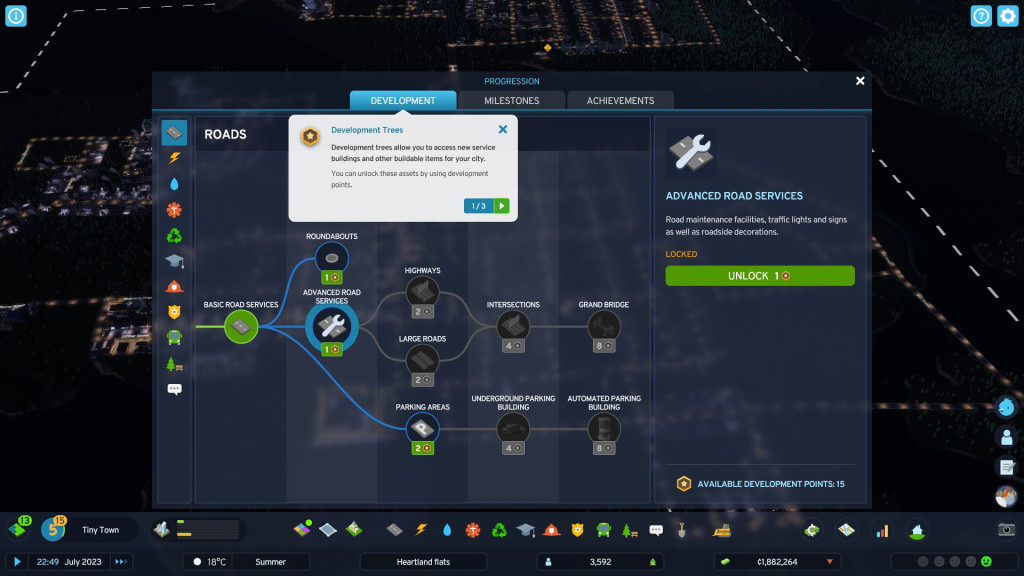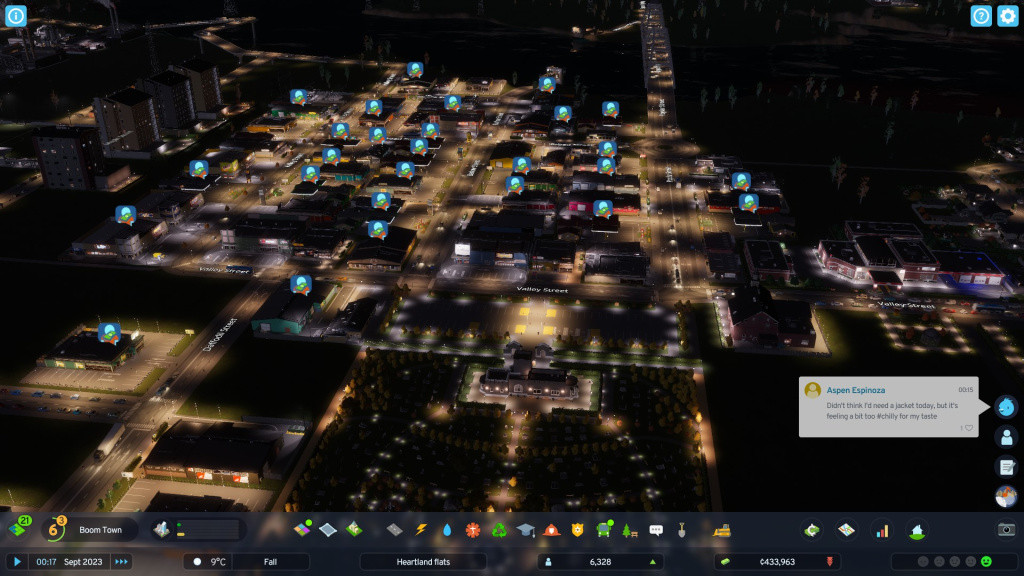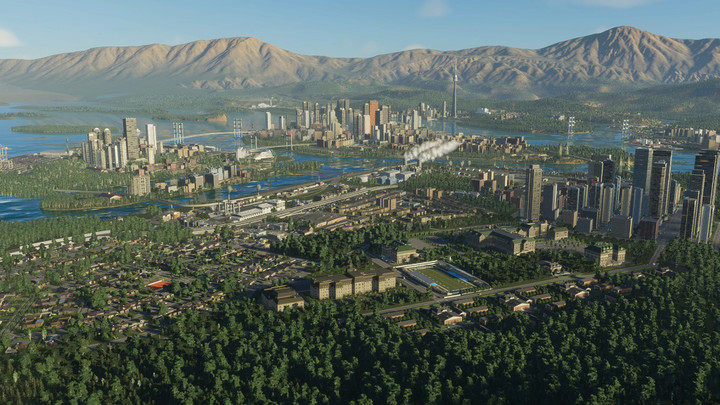A game like Cities: Skylines 2 only cements the fact that I am not fit to run a city. Placing roads that lead to nowhere, a children’s playground next to a cemetery, a housing estate within viewing distance of a sewage run-off. These are all decisions that absolutely would not stand in the real world. Luckily, Cities: Skylines 2 is a little more forgiving, and the only backlash I faced were a few angry posts on Chirper. In spite of my chaotic planning and poor leadership, I had fun with Colossal Order’s city builder sequel.
Having played the original for an unreasonable amount of hours, there are some clear improvements that Cities: Skylines 2 employs. Mainly, it’s a lot more straightforward to learn as a newer player. You don’t need to have an eye for infrastructure to build a functioning metropolis in Cities: Skylines 2, and you’ll be able to make a lot of progress just by experimenting. In fact, a lot of joy comes from restarting a new city, learning from your previous mistakes, and steadily building far more efficient systems and neighborhoods. Or, you can just build a city of nightmares. High-density housing surrounded by highways, smog, and views across four power stations, three landfill sites, and a college football stadium. The world really is your oyster.
Life In The Fast Lane

Part of what lends Cities: Skylines 2 to more immediate creativity than its predecessor is its unlock tree. As you slowly expand your city, you’ll unlock Milestones that open up new features, like certain transportation links or natural disasters, as well as inject a nice bonus into your cash reserves. On top of that, you’ll also earn Development Points, which you can then put into various Development Trees to unlock expanded services and buildable items. This could be new types of roads, hospital expansions, tourist attractions, and so on. It means you can access certain items with a little more immediacy, if you so choose, than you could in the original game.
Despite having faster access to these expanded city features, growing your municipality does feel generally slower. Residential and commercial buildings take a while to construct and, in turn, your city’s population is slow to build up. Given that Milestone progression relies on population growth and XP, you’ll spend a lot of time waiting around for your “Tiny Town” to grow into an “Expansive Metropolis.” Idly taking in the city vibes wouldn’t be so bad if the ambience was a little more bearable. Cities: Skylines 2 features the return of the radio station, and while the music itself is perfectly admissible, the same can’t be said for the radio hosts and chatter. Aside from being repetitive — you’ll hear the same story about rising housing prices at least four times an hour — it lacks charm, and you’ll find yourself running to the settings to turn it off. Sadly, the in-game sound options only expand as far as muting the radio completely. Your choices are to play with pleasant music and occasional jarring radio host interruptions, or in silence.

The game is a little tricky when it comes to balancing the working order of your city, be it through your finances, citizen happiness, or working out why a random shop in the middle of the biggest residential area still can’t get enough customers. The tutorials are helpful, and expansive, but they might not offer solutions to every problem. Much like filing your taxes, you’re just going to have to work it out.
City of Mod

Cities: Skylines 2 already offers a fair amount of features, but it’s hard not to express curiosity over its future. The original game spawned an impressive amount of DLC, ranging from natural disasters to K-Pop radio stations. A lot of that DLC content has already been integrated into Cities: Skylines 2. I was pleasantly surprised, and equally worried, to see a hurricane come ripping through my woefully unprepared township so early on. But a game like Cities: Skylines 2 lends itself remarkably well to expansions, and a number of content packs are already scheduled to release over the next year. Creativity will truly boom with the release of mods, set to be made available alongside the in-game editor shortly after launch. Until then, there’s still a lot of freedom on offer to those who have the time to sink into building their dream city.
Verdict — 4/5
Colossal Order already had a winning formula to work from thanks to the original Cities: Skylines. This sequel deepens the level of interactivity available to players, with more tiles to build on and more complex systems to design and implement. New players might need a little persistence to get to grips with the mechanics, but you’ll be able to transform a meek little hamlet into a sprawling concrete jungle — it’ll just take you a while to get there. Those returning to the series will feel right at home, with plenty of adjustments that mark Cities: Skylines 2 as a natural evolution for the series.
Cities: Skylines 2 launches on October 24, 2023 on PC via Steam, the Microsoft Store, and PC Game Pass. A PC review code was provided for review by Johnny Atom Productions.

 No ads, our video library,
No ads, our video library,




